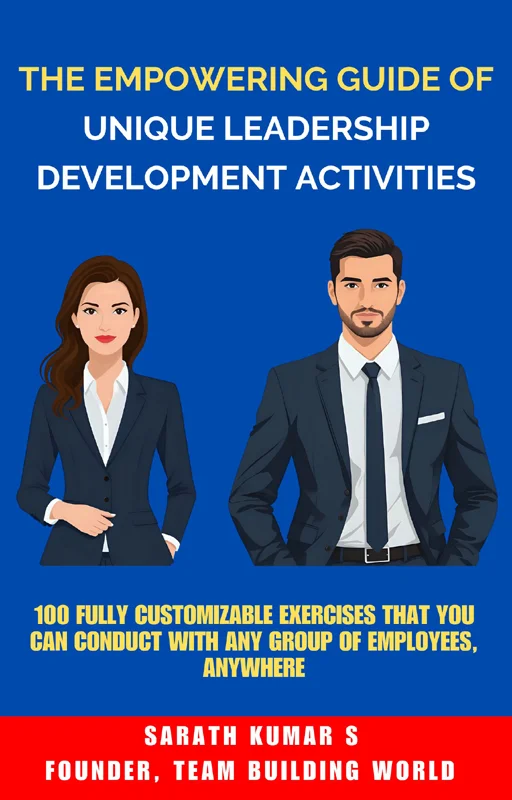How to Develop Employees into Leaders?
Do you want to know how to develop your employees into leaders?
Developing employees into leaders is not only beneficial for individuals but also essential for the growth and success of organizations. When individuals are empowered to take on leadership roles, they become more engaged, motivated, and capable of driving positive change within their teams. So, how can organizations foster leadership development and nurture their workers’ potential?
In this article, let’s see 12 practical tips and strategies for developing employees into leaders.
Why is Leadership Development Important?
Before diving into the strategies, let’s first understand why leadership development is crucial.
A Strong Leadership Pipeline
It allows organizations to build a strong leadership pipeline for the future. When identified and trained early on, potential leaders can be groomed to take up higher positions within the company, ensuring continuity and smooth succession planning.
Increased Employee Engagement and Retention
Leadership development programs show employees that their organization values them and believes in their potential. This recognition can boost employee morale, engagement, and ultimately lead to higher retention rates.
Motivated Teams
Employees who are given opportunities to develop their leadership skills feel more motivated and invested in their work. They become proactive, take initiative, and drive positive change within their teams.
Better Decision-Making
Leadership enhancement involves training staff on decision-making, problem-solving and critical thinking skills. These skills not only benefit employers but also help team members make better decisions and solve problems effectively.
How to Develop Employees into Leaders?
Here are some practical tips and strategies to develop employees into leaders.
#1. Identifying Potential Leaders
The first step is identifying those with the potential to become great leaders. Look for individuals who demonstrate strong communication skills, a positive attitude, problem-solving abilities, and a willingness to take initiative. These are the key traits of effective leaders. You can also conduct performance reviews, gather feedback from colleagues and managers, and observe coworkers’ behavior in team settings.
#2. Providing Opportunities for Growth
Once you have identified people with leadership abilities, it’s essential to provide them with opportunities for growth. This can include offering challenging assignments, cross-functional projects, or leadership training programs. Encouraging employees to take on new responsibilities and learn new skills not only helps them develop into leaders but also shows that the organization values their growth and development.
#3. Mentorship and Coaching
Mentorship and coaching play a crucial role in developing coworkers into leaders. Pairing up potential leaders with experienced mentors or coaches can provide valuable guidance, support, and feedback. This allows employees to learn from someone who has been in their position before, understand different leadership styles, and gain insights into how to handle challenges effectively.
#4. Empowering Decision-Making
Effective leaders are confident decision-makers. To develop this skill in employees, organizations need to give them opportunities to make decisions independently. Start small, such as allowing them to lead a project or team meeting, and gradually increase their level of responsibility. This will not only build their decision-making skills but also boost their confidence and sense of ownership.
#5. Encouraging a Growth Mindset
Encouraging employees to have a growth mindset is crucial for developing them into leaders. A growth mindset is the belief that one’s abilities can be developed through hard work, dedication, and learning from mistakes. Organizations can foster this by creating a culture that values continuous learning, providing constructive feedback instead of criticism, and recognizing effort over results.
#6. Lead by Example
Leadership development starts at the top. It’s essential for managers and other executives to lead by example and demonstrate the behaviors they want to see in their staff. This includes effective communication, problem-solving, adaptability, and a growth mindset. When employees see their leaders embodying these qualities, they are more likely to adopt them themselves.
#7. Regular Feedback and Recognition
Providing regular feedback and recognition is crucial for employee development. It allows employees to understand their strengths and areas for improvement and motivates them to continue growing. Managers should make it a habit to provide both positive and constructive feedback regularly, not just during performance reviews. This helps coworkers stay on track and continue to develop their leadership skills.
#8. Encourage Networking and Collaboration
Networking and collaboration are essential skills for leaders. Organizations can encourage this by providing opportunities for staff to connect with others in the industry, attend networking events, or participate in cross-functional teams. These experiences allow employees to learn from different perspectives and build relationships that can benefit them in their leadership journey.
#9. Create a Culture of Trust
Developing employees into leaders requires creating a culture of trust. This means trusting them with responsibilities, encouraging open communication, and fostering a supportive environment where individuals feel safe to share their ideas and take risks without fear of judgement or failure. When coworkers feel trusted and supported, they are more likely to step up and demonstrate their leadership potential.
#10. Promote Work-Life Balance
Leadership development also involves promoting work-life balance. Burnout and stress can hinder employee growth and performance, so it’s crucial for organizations to encourage healthy work habits and prioritize mental well-being. This allows employees to recharge, be more productive, and develop into effective leaders who can manage their own time and responsibilities effectively.
#11. Reward and Recognition
Organizations should recognize and reward employees who are excelling in their leadership development journey. This can include promotions, salary increases, or other forms of recognition such as awards or certificates. These gestures not only show that the organization values employee growth but also motivate others to work towards developing their leadership skills.
#12. Continuously Evolve and Adapt
The world of business is constantly evolving, and effective leaders must be able to adapt to change. As such, it’s essential for organizations to continuously review their leadership development strategies and make necessary adjustments based on industry trends, organizational goals, and employee feedback. This ensures that the development programs remain relevant and effective in nurturing the next generation of leaders.
Want Some Unique Leadership Development Activities?
If you want some unique activities to equip your employees with leadership skills, qualities, and mindset, you can get my new e-book:
Or Want Some Unique Team Building Activities?
If you want some unique activities for your employees (both in-person and virtual), you can get my new e-book:
Final Words
Turning employees into leaders is a continuous process that requires dedication, effort, and patience. By doing this, organizations can build a strong and capable leadership pipeline for the future. Remember that developing leaders not only benefits the individual but also contributes to the overall success of the organization. So, start implementing these tips today and witness your coworkers grow into strong and capable leaders!
FAQ: Developing Employees into Leaders
You might have these questions in mind.
How can I identify potential leaders within my organization?
Look for employees who demonstrate strong communication skills, problem-solving abilities, and a willingness to take on new responsibilities. You can also ask for recommendations from managers or conduct assessments to identify potential leaders.
How long does it take to develop someone into a leader?
Developing someone into a leader is an ongoing process that takes time and effort. It could take anywhere from a few months to several years, depending on the individual’s skills, mindset, and commitment towards their development.
How can I measure the success of my leadership development efforts?
Measuring the success of leadership development efforts can be challenging but not impossible. You can use performance metrics such as employee engagement, retention rates, and promotions to track progress. Conducting surveys and gathering feedback from employees can also provide valuable insights into the effectiveness of your leadership development initiatives. Finally, regularly evaluating the skills and behavior changes in your coworkers through assessments and performance reviews can give a tangible measure of their growth as leaders.
What are the key challenges in developing leaders within an organization?
Developing leaders within an organization brings several challenges. Balancing immediate business needs with long-term leadership development goals is crucial. Resistance to change from employees and existing leaders, as well as the need to identify the right individuals with leadership potential, further add complexity to the process. Overcoming these challenges requires a strategic approach, continuous learning, and a commitment to fostering a culture that values and nurtures leadership development.

